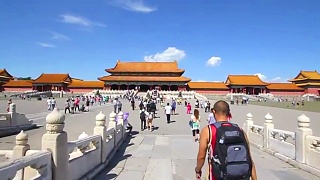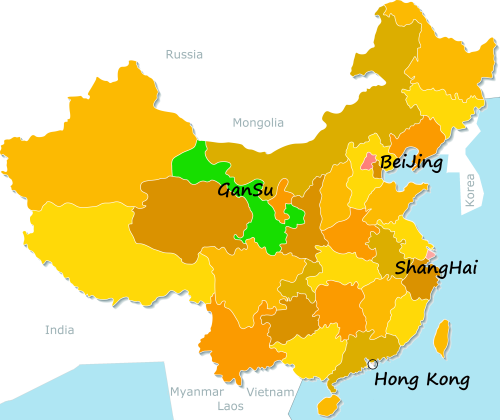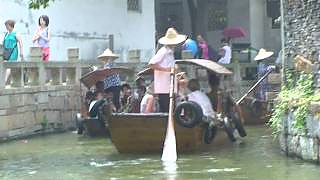
|
Despite its northern location, Beijing, the blue sky city, is one of the sunniest places in China and, in summer, also one of the hottest.
Although around 1,000 miles north of Shanghai, and some 2,000 miles north of Hong Kong and tropical Hainan, Beijing is hotter through the summer months (mid-may to mid-September). Generally a dry heat, tropical thunderstorms can appear on occasion, and with night time temperatures in the 70s you'll be dancing in the rain ;)
Excursion ideas : the in-the-mountains Buddhist temples of JieTaiSi and TanZheSi (bus, from the western end of metro line 1), the coastal city of TianJin (train), the beach at BeiDaiHe (train) and the nearby eastern end of the Great Wall (QinHuangDao), the imperial summer resort of ChengDe (combine with a visit to Simatai / JinShanLing Great Wall; coach or train), LongQing Gorge (LongQing Xia), the Spirit Way and general countryside at the Ming Tombs.
TianJin can be a day trip as it is connected by high-speed rail, but two days would be great too. For ChengDe or BeiDaiHe, two or three days is best. Remember to take your passport in order to check in to a hotel.
Or (more locally) visit the beach / pool at ChaoYang Park. Also, consider the Summer Palace (YiHeYuan), YuanMingYuan (the 'old' / original Summer Palace), BeiHai and JingShan Parks, the Ethic Culture Park (MinZu), the Olympic Forest Park, and these places in the Western Hills: XiangShan Park, Beijing Botanical Garden, BaDaChu (Eight Great (Buddhist) Sites area).
|

 ZhangYe National GeoPark
ZhangYe National GeoPark



